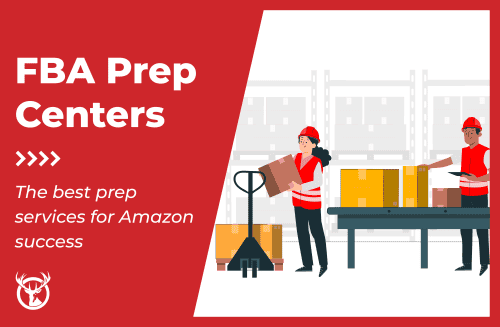Becoming a seller on Amazon is a straightforward process, and the best thing about it is that anyone can do it. However, there are some cases when the process is a little more complicated. When you are selling certain types of products, you will need some special permissions in order to do so. Amazon is very much a customer-first company, which is exactly why these restricted categories exist. This is so that the customers can have confidence in the quality of the products they are buying.
There are categories that are “gated” or “restricted” on Amazon. This doesn’t mean that you cannot sell the items in those categories. It simply means that there will be additional requirements and standards to meet. Basically, Amazon wants to protect its customers by taking extra precautions to ensure that certain quality, safety, and authenticity standards are met.
Amazon has evolved a lot over the years. At one point, there were a lot of counterfeit and quality issues that left customers very unsatisfied. This is why Amazon found it necessary to create an extra layer of buyer protection for certain items.
Different levels of Amazon gating
Individual ASIN level – There are some individual products that are restricted. You might find a product that is restricted in an otherwise unrestricted category, and you could be forced to provide special documentation.
Product Condition – There are certain categories or subcategories where you can only sell items that are in “new condition.” There are several different conditions a product could be in. If you are having trouble figuring out which condition your product belongs in, it’s best to consult the guidelines.
Brands – This refers to items that are owned by big brands that have agreements with Amazon. For example, you could have some trouble if you wish to sell a Lego set or something similar. You would be required to confirm its authenticity in order to list the item on an existing listing. This policy is in place in order to protect established brands from counterfeit or otherwise non-authentic products.
Category – There are entire categories that are gated. This is the most common form of gating that you will encounter. There is no other method forward than to try and add your product. Then as you progress through this attempt, you will learn what the requirements are to add the item and try to meet them.
Subcategory – In some categories, there are subcategories that require special permissions. A good example is the category of Health and Personal care. While the category itself is not gated, the Vitamins and dietary supplements subcategory does require prior approval.
Which categories are gated on Amazon?
Here is a short list of categories that require special approval. You can see the complete and up-to-date list here.
- Automotive & Powersports
- Collectible Coins
- Entertainment Collectibles
- Fine Art
- Holiday Selling Requirements in Toys & Games
- Jewelry
- Join Amazon Handmade
- Join Amazon Subscription Boxes
- Made in Italy
- Music & DVD
- Personal Safety and Household products
- Services
- Sports Collectibles
- Streaming Media Players
- Video, DVD, & Blu-ray
- Watches
There are also restrictions for items that are specific for sellers doing business with FBA:
- Alcoholic beverages (including non-alcoholic beer)
- Vehicle tires
- Gift cards, gift certificates, and other stored-value instruments
- Products with unauthorized marketing materials, such as pamphlets, price tags, or other non-Amazon stickers
- Products that require preparation but that have not been prepped according to FBA packaging and prep requirements
- Loose packaged batteries
- Damaged or defective units
- Products with labels that were not properly registered with Amazon before shipment or that do not match the product that was registered
- Products that do not comply with any agreement between Amazon and the seller
- Products that have been illegally replicated, reproduced, or manufactured
How to get approval to sell in restricted categories
In order to learn if your product has any limitations, you should first go to the “inventory” tab on your seller central dashboard. Then proceed to find your product in the search bar by either typing in its title or another identifier.
When you find the product you are looking for, click on the listing limitations that show up next to the image of the product. Here we have an example of a product that’s in a gated category:
If you click on “show limitations,” you can see what those limitations are. If you click on “Apply to sell” you will begin the process of applying for the product to be listed.
Here are some common requirements that you might be expected to meet in order to sell a restricted product:
Invoices – The invoices need to be scanned and readable. Your company address must match the address on your seller account. You have to provide detailed information about the manufacturer and the origins of the products. Also, for some products, such as perishable goods, the invoices must be recent enough to match the expiration date on the items that are either in your FBA inventory or are available to be sold and sourced by your own means. When it comes to perishable items, there might be different time intervals depending on the product.
A Letter of Authenticity – This is a document that proves that the product you are listing is not a counterfeit and that it legitimately belongs to the brand it’s listed under.
Other regulation documentation – Depending on the category and the product, you might be required to show Amazon your FDA approval letter or that you have met some other standard requirement that is necessary in order to complete the application process.
Company website – This is a common requirement that basically proves your own legitimacy as a seller. The information on the website needs to match the information that is related to your seller’s account. It’s important that the e-mail address you are using for your seller account shows up on the website. The address of your business also needs to match the one that you provided when you were creating your seller account, or must be updated if that has changed.
Being eligible to sell in a restricted category
If Amazon allows a seller to sell in a restricted category, they expect that seller to have a good seller record. The additional loopholes you have to jump through require more seller responsibility, so you must prove to Amazon that you are a responsible seller. Before you can have the option of selling in a restricted category, your seller account needs to meet these metrics:
- Order Defect rate under 1%.
- Late Shipment rate under 4%.
- Pre-fulfillment cancellation rate under 2.5%.
If your seller account is healthy, Amazon allows you to begin the application process. You will be led along the way and stay in contact with Amazon officials as you move forward.
How to find out if any specific product is gated
Once you are about to use the “add product” option on Seller Central and you encounter a list of requirements it’s already too late to turn back. This could mean that you already have product ordered and you need to make a listing.
It’s important to know if a product is in a gated category before you order it, not afterwards. There is a sophisticated piece of software available that can help you with that question.
Below you can see the AMZScout Amazon Dropshipping & Arbitrage tool in action.
This software works in a straightforward way. You simply open a listing of a product that you are interested in, run the tool, and access all of the information you need. You can see the fees and the price ranges, and you can enter your own cost of acquisition and calculate profits.
You can also immediately see if any product requires additional approval for a restricted category or not. Using software like this can save you a lot of headaches in the long run. It will also save you time, since you don’t have to check every product idea manually.
Conclusion
It can be a hassle to begin selling in a gated category. However, if there’s a standard that needs to be met in order to sell those products, it could be less competitive. You also won’t have to worry about counterfeit hijackers. As well, it’s a lot less likely that someone will steal your buy box when selling a restricted product.
On the other hand, the competition in restricted categories will also be responsible and dedicated sellers. This doesn’t have to be a negative for you, though, since any good Amazon seller will assess the competition first, establish a game plan, and have some competitive advantages lined up. With enough knowledge and preparation, selling in a restricted category could be worth the extra work.
Good luck, sellers!
This post was written by AMZScout Amazon Expert Team. AMZScout is one of the top Amazon research tools for online sellers and has been in the field for more than four years now. We love to share our expertise and identified trends to guide sellers to success.











